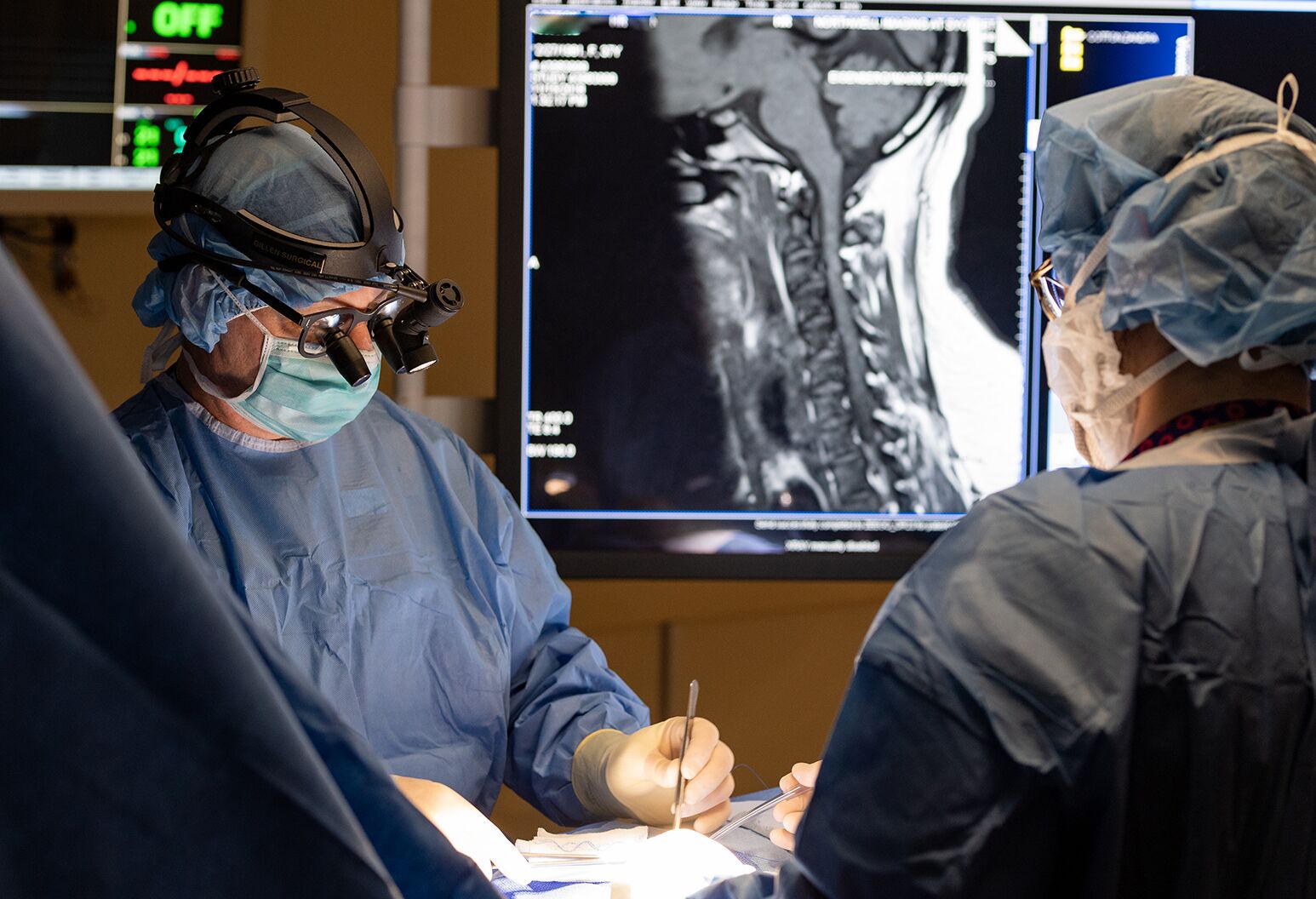Finding Affordable Options with the Best Spine Surgeons in St Louis MO
Finding Affordable Options with the Best Spine Surgeons in St Louis MO
Blog Article
An Introduction of Back Problems That Commonly Cause Surgical Therapies
Spine conditions such as herniated discs, spinal stenosis, and degenerative disc illness often demand medical treatments when conservative treatments stop working to relieve persistent signs and symptoms. Recognizing the subtleties of each condition and the matching medical alternatives, such as discectomy or back fusion, is important for effective monitoring.
Herniated Discs
Although numerous individuals with herniated discs might find relief via conventional therapies, surgical procedure becomes an essential factor to consider when signs intensify or linger - best spine surgeons in st louis mo. A herniated disc occurs when the soft internal gel of a spine disc sticks out via its external layer, possibly leading and pressing neighboring nerves to pain, numbness, or weakness in the extremities
Conservative management typically includes physical therapy, pain medicines, and corticosteroid injections, which aim to minimize swelling and enhance feature. However, in situations where these methods fail to ease incapacitating signs, surgical options may be explored.
The most common surgery for herniated discs is a discectomy, which entails the elimination of the herniated portion of the disc to relieve pressure on the impacted nerve root. In a lot more extreme cases, spine blend may be needed to support the affected vertebrae.
Patients are encouraged to review the prospective dangers and advantages of surgical procedure with their doctor to make a notified decision. Eventually, the objective of any type of medical intervention is to recover function, reduce pain, and improve total lifestyle for individuals experiencing herniated discs.
Spine Stenosis
Back stenosis takes place when the spaces within the back slim, bring about raised stress on the spine and nerves. This condition can develop in different regions of the spine, consisting of the lumbar and cervical areas, typically because of age-related adjustments, such as degenerative disc condition, arthritis, or enlarging of ligaments.
Patients with spine stenosis may present with signs and symptoms that include discomfort, feeling numb, tingling, or weak point, mainly in the arms or legs. These signs and symptoms can be worsened by activities that entail standing or strolling, usually leading people to look for alleviation with traditional treatments like physical therapy, drugs, or epidural steroid injections.
However, when these non-surgical treatments stop working to provide appropriate relief, medical options might be taken into consideration. Typical procedures for spinal constriction include laminectomy, which includes the elimination of part of the vertebra to ease pressure, and spine blend, which stabilizes the damaged location. The decision to go after surgical procedure is generally based on the intensity of signs and symptoms, the level of practical problems, and the total wellness of the individual. Prompt diagnosis and monitoring are vital to protect against further neurological compromise and improve lifestyle.
Spondylolisthesis
Spondylolisthesis takes place when one vertebra slides onward over one more, causing imbalance of the spine. This problem can arise from different variables, including genetic issues, injury, or degenerative modifications in the spine. It is most commonly observed in the lumbar region, especially at the L4-L5 and L5-S1 levels.

Therapy choices vary based on the severity of the slippage and the signs and symptoms presented. Traditional procedures, consisting of physical treatment, pain monitoring, and activity adjustment, are frequently the first line of protection. When non-surgical approaches stop working to eliminate signs or when substantial nerve compression is present, surgical intervention might be necessitated. Surgical choices can include back blend or decompression procedures, targeted at restoring alignment and alleviating neurological signs. Early diagnosis and suitable administration are crucial for ideal results in clients with spondylolisthesis.
Degenerative Disc Illness

People with DDD commonly experience discomfort that may radiate to the arms or legs, depending upon the influenced area of the back. The problem can be identified with a mix of scientific evaluation, imaging researches, and client history. Treatment alternatives commonly start with traditional steps, consisting of physical therapy, pain monitoring, and way of life adjustments. However, when these approaches fall short to supply ample alleviation, surgical treatments might be thought about.
Surgical options for DDD might include spinal fusion or fabricated disc substitute, aimed at stabilizing the affected sector and minimizing discomfort (best spine surgeons in st louis mo). Ultimately, the choice of therapy is embellished, thinking about the intensity of the problem, client wellness, and link way of living elements
Back Lumps

Back lumps can occur from numerous elements, consisting of genetic tendency, environmental influences, and pre-existing medical problems. People may provide with a variety of signs, including localized discomfort, neurological deficits, weak point, or adjustments in bowel and bladder feature, depending on the tumor's size and area.
Diagnosis generally includes imaging studies such as MRI or CT checks, which assist delineate the growth's features and effect on bordering structures. In assessing treatment choices, the growth's place, grade, and kind are essential factors to consider. Surgical intervention might be required to ease signs and symptoms, acquire a biopsy, or get rid of the tumor totally. The objective of surgical treatment is often to unwind neural components and support the spine. Adjuvant therapies, consisting of radiation or radiation treatment, may additionally be required relying on the growth's nature. Early discovery and intervention are essential for maximizing end results in people with spinal tumors.
Conclusion
In recap, spine problems such as herniated discs, spinal stenosis, spondylolisthesis, degenerative disc disease, and back tumors often demand medical treatment as a result of their possible to trigger significant pain and useful problems. While traditional therapies may supply short-term alleviation, surgical choices end up being important when symptoms get worse or continue. Timely medical diagnosis and treatment play a crucial role in restoring function and enhancing the lifestyle for affected individuals, underscoring the relevance of detailed spine care.

Report this page